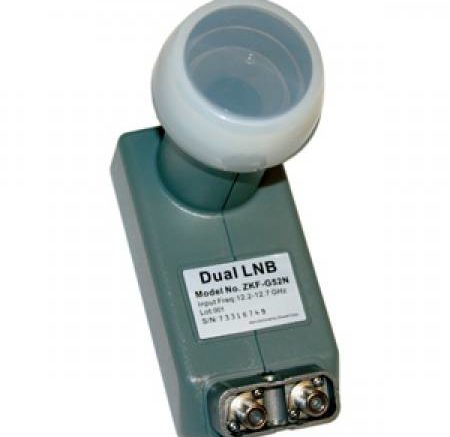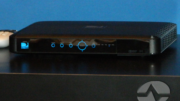The front part of a satellite dish is called the “LNB.” It’s the part that actually contains both the receiving element and the electronic amplifiers that make a satellite dish actually work. (In case you’re curious, the term “LNB” refers to the part’s dual role as a “Low Noise amplifier” and “Block downconverter.”)
For the most part, LNBs look like white plastic dots. Does that mean they’re all the same? In a perfect world, yes they would be. But there are some considerations that set LNBs apart from each other. Let’s take a look at different characteristics of LNBs.
Frequency
This is the most important characteristic of an LNB. What frequencies is it designed to work with? For most satellite dishes, the answer is simple. Pretty much every modern satellite dish made today is designed to receive transmissions on the Ku band of 11.7-12.7GHz. Older “big ugly dishes” used the C band of 4-8GHz. The sole exception for use by regular consumers is the DIRECTV LNBs. Some receive frequencies on the Ka band and Ka reverse band, from 26.5-40GHz. DIRECTV has a western-hemisphere exclusive license on these frequencies and uses them for HD and 4K programming.
Polarization
Polarization is a term that describes the way the waves travel through the air. It’s very easy to imagine horizontal and vertical polarization as a wave that either goes up and down or side-to-side. This is a GIF of a vertically polarized signal.
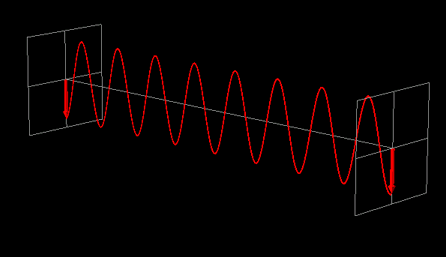
These signals are easy to generate and many satellite LNBs are designed to accept horizontal polarization which is used throughout the world. However, horizontal polarization requires more precise aiming and is less homeowner friendly. It’s also very difficult to aim a dish to get more than one horizontally-polarized signal at a time and that’s a problem for DIRECTV and DISH which have multiple satellite locations. That’s why they use circular polarization, in which the wave goes around like a big corkscrew:
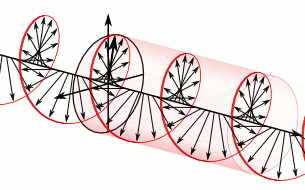
Circularly polarized signals need LNBs that are designed to receive them. When circular polarization was a new concept, the LNBs and the transmitting equipment were more expensive but today there’s no real cost difference. However switching from horizontal to circular polarization means replacing the LNB so areas like Europe still use horizontally polarized LNBs because people already have them and they work.
Constellation
The United States and Canada are pretty much the only places in the world where pay-TV services use multiple satellites at the same time. In the rest of the world you basically are aiming at one satellite at a time. So, US satellite dishes have multiple LNBs crammed onto a single dish, as you’ve no doubt seen.
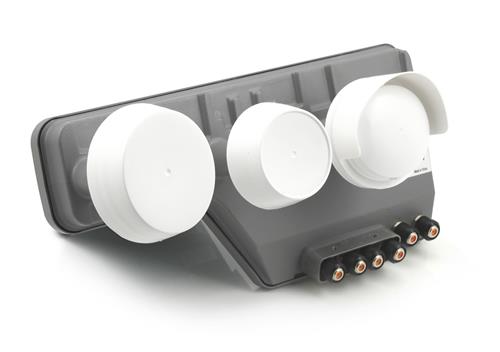
Some of the more modern DIRECTV dishes have all the electronics under one big piece of plastic but there are still multiple sets of electronics under there.
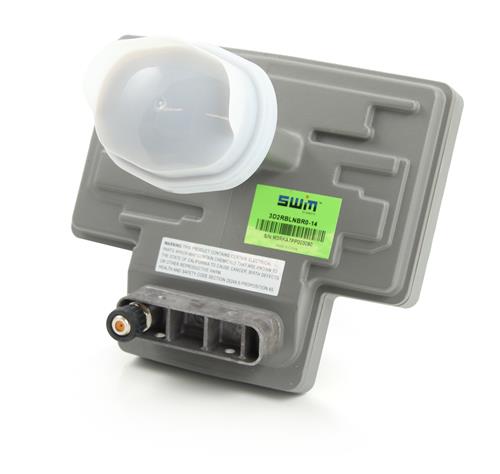
In particular, this LNB can receive Ka, Ka-reverse, and Ku band transmissions from three different locations. That’s one fancy LNB!
How to choose the right LNB
Choosing the right LNB is usually easy since here in the US, most dishes only take one or two different ones. If you have questions about what’s right for you, give the experts at Solid Signal a call at 888-233-7563 and let us help you get the right parts for your entire satellite installation! We’re here for you during East Coast business hours. If it’s after hours, fill out the form below. We’ll get back to you, usually within one business day.

